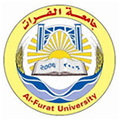آخر الأخبار
البناء المستدام وأثره على التوازن البيئي دراسة مقارنة بين التجربة الالمانية والتجربة السورية
2013, Volume 7, issue 27,pp 313-338| Cite as
Sustainable Buildings and Ecological Development
| authors |
Ghassan Al-Badwan |
| Abstract |
The research paper is focussed on an important topic for architects and urban planners dealing with sustainable urban environment and architecture. The focus of the research is laid on comparative studies of two German examples: The Federal Institution of Environment „Umweltbundesamt" in Dessau and the Eco-Settlement (Kronsberg) in Hannover. Both projects represent a model for eco-development, energy efficient urban settings and “green” buildings. Through an intelligent use of passive and regenerative energy, both projects have become trendsetter in energy saving urban planning and architectural design. The first case study is the recently realized housing scheme in Hannover / Germany. The settlement has been implemented within the frame of the EXPO 2000 respecting in an exemplary way the guidelines of the Agenda 21. This includes the use of regenerative energy, reduction of CO2 pollution as well as urban design for ecological settlements) patterns and constructive details. It includes as well sustainable transport and participatory planning Both projects have been monitored scientifically in order to get inputs for future development in practice and research. The second part of this paper analyses two Syrian examples: The French School in Damascus and a residential building in Qudsaia. The French School relies exclusively on the use of passive energy and thus being able to naturally control the indoor temperatures. Energy consumption could have been reduced remarkably. Also the residential building is one of the first in Syria to focus on better isolation, on eco-material and solar panels to reduce energy consumption. Finally the paper points out the importance of defining appropriate local Syrian criteria as well as planning and building guidelines supporting the special potentials for sustainable urban settlements and sustainable architecture in Syria. |
| الكاتب |
غسان البدوان |
| الملخص |
يركز البحث على أهمية الموضوع بالنسبة للمعماريين ومخططي المدن ,الذين يعملون في مجال التنظيم العمراني والمعماري المستدام .ويركز البحث على تجربتين ألمانيتين :الأولى عي المكتب الإتحادي للبيئة في مدينة ديساو /ألمانيا والتجمع السكني الايكولوجي (كرونسبيرغ ) في مدينة هانوفر. يمثل المشروعين نماذج لتطوير العمارة الأيكولوجيا وكفاءة الطاقة في السياق العمراني والأبنية الخضراء .وتعتبر هذه المشاريع من المشاريع الرائدة من خلال استخداماتها الذكية للطاقات الذاتية والمتجددة في التنظيم العمراني والمعماري .النموذج الأول وهو التجمع السكني في مدينة هانوفر وقد صمم ونفذ في أطار EXPO2000وقد طبقت فيه اشتراطات Agenda21,ويتضمن هذا استخدام طاقات الطاقات المتجددة وتخفيض غاز ثنائي أكسيد الكربون ويمثل في نفس الوقت نموذجا للعمارة الأيكيولوجية ويساهم في تعزيز التوازن الطبيعي .كما يتناول مسألة السير والاستدامة وأهمية المشاركة الأهلية .ولقد واكب المشروعين أبحاث علمية من معاهد متخصصة من أجل وضع النتائج في خدمة المشاريع المستقبلية والبحث العلمي .
ويعالج القسم الثاني من البحث تجربتين في سورية:المدرسة الفرنسية في دمشق ومبنى سكني في قدسيا .لقد نفذت المدرسة الفرنسية باستخدام نظام الطاقة الذاتية والمعطيات الطبيعية ,وقد استطاع المصممون تحقيق خفض ملحوظ في الطاقة وخفض درجة الحرارة في الداخل وخاصة في الصيف مما خلق بيئة تحقق الراحة الجسدية للطلبة .كما استطاع مشروع قدسيا تحقيق وفر في الطاقة من خلال إجراءات بسيطة مثل العزل واستخدام اللاقطات الشمسية والتدفئة الأرضية .
ويشير البحث بالنهاية إلى أهمية وضع معايير واشتراطات محلية تساهم في تعزيز ودعم بناء التجمعات السكنية والعمارة المستدامة . |














